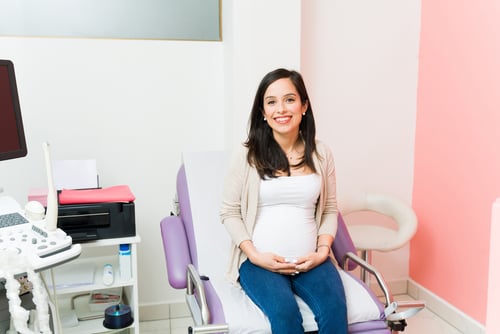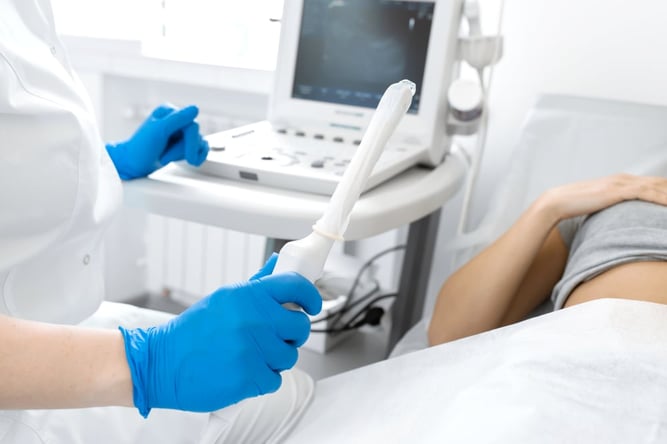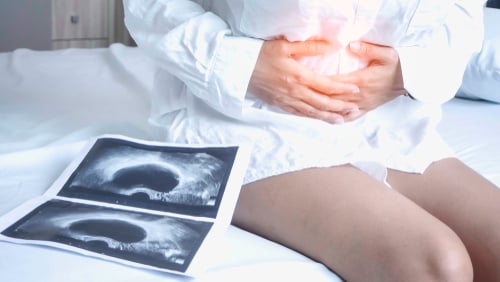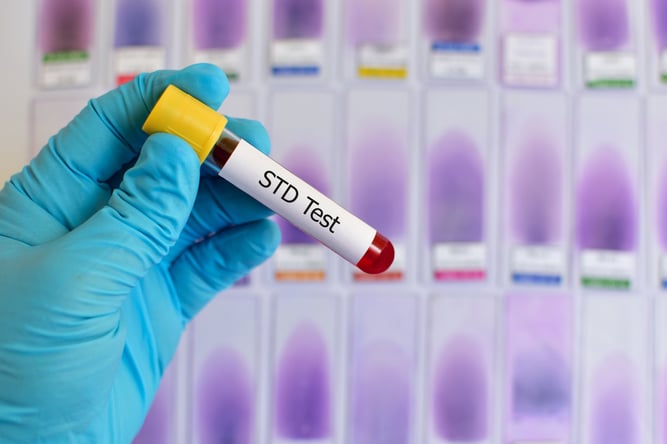Fetal Heart Evaluation
Trusted Obstetrics serving Long Island and Upper East Side New York, NY. Visit our website to book an appointment online: Garden OB/GYN.

Importance of Fetal Heart Evaluation
Monday, November 06, 2006
Kenneth F. Trofatter, Jr., MD, PhD
Early last week, a 17 year old woman, carrying her first baby, was seen in the office for a routine ultrasound at about 18 weeks’ to confirm gestational age and assess fetal anatomy. During that examination, the baby was found to have a heart abnormality called an endocardial cushion defect, or A-V canal. This particular abnormality is very common in babies with trisomy 21 (Down Syndrome). She was informed of this association and offered an amniocentesis which confirmed that diagnosis. At her age, the expected risk of having a baby with trisomy 21 is approximately 1 in 2000, and the overwhelming likelihood is that the diagnosis would not have been made until the time of delivery if a thorough evaluation of the fetal heart was not part of even our most routine examinations.
Fetal heart abnormalities are found in 0.4% to 1.1% of all live births. Such defects are the most common abnormalities detected following delivery and these are the leading cause of infant mortality related to birth defects. More than one-third of all malformations found after delivery are congenital heart defects (CHD); despite the widespread use of ultrasound during pregnancy, only 4-7% of malformations detected before delivery are cardiovascular defects. Thus, the vast majority (80-90%) of fetal heart abnormalities are not suspected prior to the birth of the baby. Prenatal diagnosis of CHD can be difficult, but is valuable because outcome for certain abnormalities can be dramatically improved by accurate diagnosis and adequate preparation.
Obstacles to performing a fetal heart evaluation can be the result of many factors: fetal heart size (only about 2 cm at 18 to 20 weeks); rapid heart movement; fetal movement; fetal position; placental location; maternal habitus; and, calcification of the skeleton, especially, the rib cage and upper extremities at later gestational ages, that causes ‘shadowing’ of the cardiac silhouette. Nevertheless, even practitioners without specialized training can improve CHD detection by paying careful attention to the heart during routine fetal ultrasound evaluation and by having a low threshold for referral to centers that can perform a more thorough cardiac examination. This threshold can be based on actual suspicious diagnostic findings (remember, it is much more important to recognize or suspect that something is 'not normal' than to know what the abnormality actually is!), by the inability to visualize adequately the fetal heart (never assume something is normal if you cannot see it!), and by attention to CHD risk factors.
Approximately, 90% of major cardiac malformations can be ruled out by methodically evaluating an adequate '4-chamber view' of the fetal heart. Documentation of a good 4-chamber view remains the standard of care for evaluation of the fetal heart in the office setting when an anatomic survey is performed. The optimum view for this evaluation is obtained with the fetal back down and with the cardiac axis at 30-60 degrees to the plane of the transducer. In this view, the cardiac axis, integrity of the interventricular septum, comparability of the chamber diameters, and free movement of the atrio-ventricular valves (mitral and tricuspid valves) can be readily assessed using ultrasound equipment currently available in most office settings. In more experienced hands, evaluation of the pulmonary venous return to the left ventricle can also be seen in this view. A suspected abnormality of any of these parameters, or the detection of a cardiac arrhythmia noted during the study, is an indication for a thorough fetal echocardiogram. A 'targeted' scan (detailed anatomical evaluation) is also recommended if noncardiovascular abnormalities are found due to the increased likelihood of cardiac malformations associated with other congenital defects. Major limitations of the 4-chamber view alone are inadequate assessment of the aortic and pulmonic outflow tracts, the aortic and ductal arches, the major branches of the pulmonary tree, and the vena cava.
Risk factors for CHD include family history; previously affected baby; pregestational diabetes; advanced maternal age; multiple gestation; use of certain prescription medications (e.g., lithium; anticonvulsants; isotretinoin); polysubstance abuse; autoimmune disorders; and, known phenylketonuria. Although CHD is often considered to be the result of multifactorial contributions, a strong family history warrants genetic counseling and possible evaluation for specific genetic markers such as the chromosomal microdeletion 22q11.2. If a woman has had one affected child, the risk to a subsequent child is 2-5%; if two affected children, subsequent risk is 5-10% or higher. If the mother herself has had a congenital heart defect, the risk to her offspring can be as high as 18%; if there are two affected first-degree relatives, the risk can approach 50%!
In addition to these risk factors, other indications for fetal echocardiography include: intrauterine growth restriction and, occasionally, macrosomia (big babies); suspected exposure to certain teratogenic viruses (CMV, rubella); nonimmune hydrops; abnormality of amniotic fluid volume; and, known or suspected fetal chromosomal abnormality. Maternal morbid obesity is associated with greater risk of various congenital abnormalities, especially neural tube defects and cardiac malformations, and is an independent risk factor that warrants a targeted sonogram that includes more complete evaluation of the fetal heart than can ordinarily be performed in the office setting.A major reason for detecting CHD in the fetus is to ascertain the optimum site for delivery. Minor abnormalities, unlikely to need immediate attention, often permit a safe delivery at the primary care facility. Babies with more complex abnormalities are better delivered at a tertiary care center. Such is the case with the prenatal diagnosis of a group of disorders called ‘ductal dependent abnormalities’ such as hypoplastic left heart sequence, pulmonary atresia, transposition of the great arteries, severe Tetralogy of Fallot, critical aortic stenosis, and severe coarctation of the aorta. These abnormalities place the baby at increased risk for sudden decompensation if the ductus arteriosus closes before the cardiac malformation can be addressed medically or surgically. If these conditions are suspected before delivery, arrangements can be coordinated, time permitting, for the patient and her fetus to be evaluated at a facility that can best provide appropriate support services following the birth of the baby.
New advances in sonographic techniques will further improve the detection and the accuracy of prenatal diagnosis of CHD. Measuring the nuchal translucency (clear space between the skin and underlying soft tissues of the baby’s neck) at 11-14 weeks’ gestation by specially certified individuals has not only been proven to increase the early detection of aneuploidy (chromosomal abnormalities), but is also of great value in detection of major cardiac malformations in euploid ( chromosomally normal) fetuses. A chromosomally normal fetus with a nuchal translucency greater than the 95th percentile has a 1 in 23 chance of having a major congenital heart defect. Using this indicator of risk to guide further diagnosis, many major heart defects can be accurately defined sonographically by 14-16 weeks’ gestation.
In addition to earlier diagnosis, more specific categorization of abnormalities is now possible later in pregnancy using 3D/4D sonographic technology. A complete 4D 'volume' of the heart can be rapidly obtained in the 4-chamber view and then can be analyzed following acquisition using post-processing software capable of reconstructing the heart and vasculature, permitting detection of abnormalities not readily visualized in 'real-time.' This approach is revolutionizing the evaluation of the fetal heart, minimizing the time and frustration of the real-time fetal echocardiogram, and improving the accuracy of diagnosis.
































